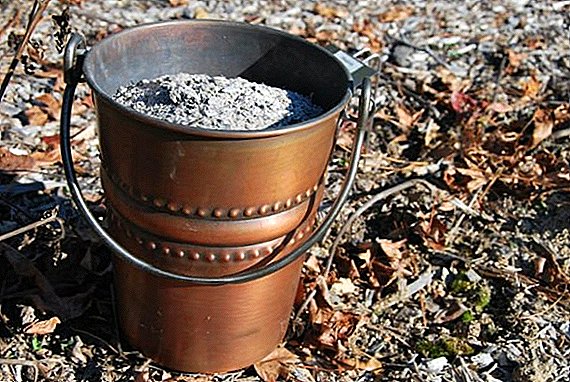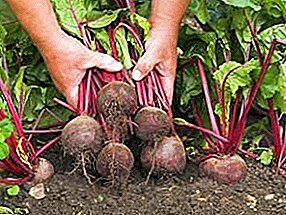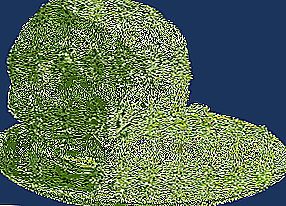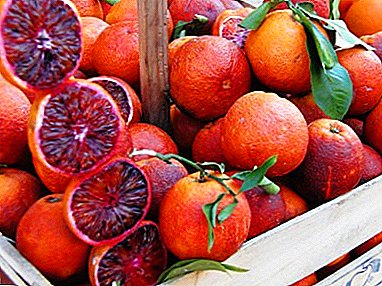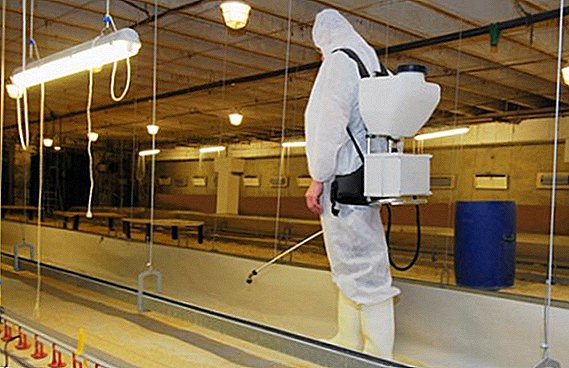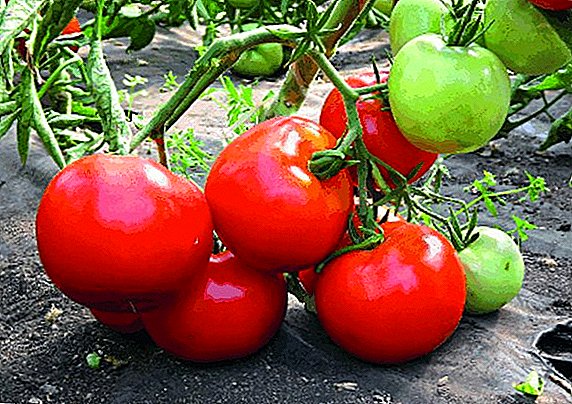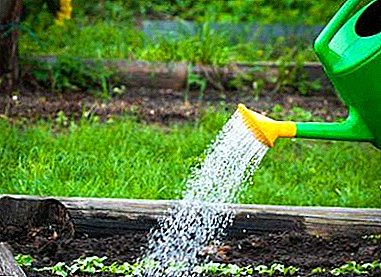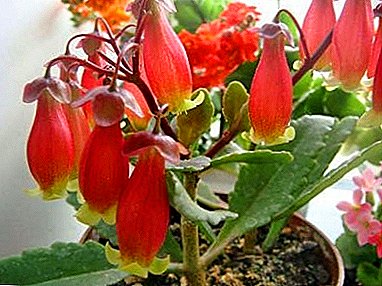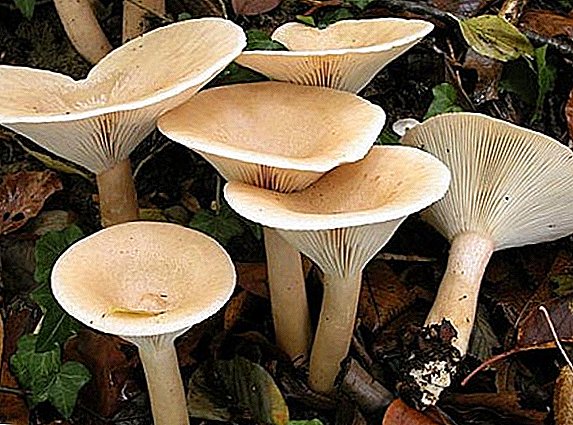 The mushroom pickers that collect govorushki are well known - among these mushrooms there are also inedible species. Before you send the find to the basket, you need to know exactly what kind of talkers it belongs to. If even the slightest doubt arises that it is an edible mushroom, it is better not to take it. Below we consider the characteristics of various types of govorushek: orange, winter, anise, goblet and other types (edible and inedible).
The mushroom pickers that collect govorushki are well known - among these mushrooms there are also inedible species. Before you send the find to the basket, you need to know exactly what kind of talkers it belongs to. If even the slightest doubt arises that it is an edible mushroom, it is better not to take it. Below we consider the characteristics of various types of govorushek: orange, winter, anise, goblet and other types (edible and inedible).
General characteristics and description of the genus
In the people, these cap mushrooms are known under the names govorushka, or ryadovka. In Russia, the mushrooms are called chatter because of heap growth: next to one representative of this species there will definitely be another ten of his relatives of different sizes, as if the whole crowd had gathered to talk with each other.
Scientific classification govorushek:
- genus - Clitocybe;
- belong to the department of basidiomycetes;
- class belonging to agaricomycetes;
- ordinal name - agaric;
- belonging to the family ryadovkovyh.

Important! It is not uncommon for mushroom pickers to be mistaken and rank very similar mushrooms from other families to govorushkas. It is advisable to collect govorushki (ryadovki) mushroom pickers "with experience", since it is very easy to err in species diversity.Speakers are divided into:
- edible;
- conditionally edible;
- poisonous.
Discover the most popular types of edible and inedible mushrooms.
Fruit body
Rarely when the fruit body reaches a large size, medium and small are more common, with hats no more than five centimeters. While the mushroom is young, the white fruit body is elastic. In old mushrooms, it grows, loses its elasticity and becomes crumbly.
Hat
Ordinary types of hat frames are small, up to 6 cm wide, although, for example, a giant hat can have a diameter of 20 cm.  The mushroom that has just appeared out of the ground has a round cap, its edges are turned inside. Over time, the hat straightens and increases in diameter. In aging mushrooms, it can arch in the opposite direction and even take the form of a goblet. The outer surface of the mushroom hat is without growths, without luster, smooth, but there may be strange spots on it, in the form of mold - these are remnants of the mushroom mycelium. It may have a variety of colors: off-white, gray-brown, fawn, brown-pink or all sorts of ocher. By the middle of the hat, the color is more saturated, and at the edges it seems to fade and pale.
The mushroom that has just appeared out of the ground has a round cap, its edges are turned inside. Over time, the hat straightens and increases in diameter. In aging mushrooms, it can arch in the opposite direction and even take the form of a goblet. The outer surface of the mushroom hat is without growths, without luster, smooth, but there may be strange spots on it, in the form of mold - these are remnants of the mushroom mycelium. It may have a variety of colors: off-white, gray-brown, fawn, brown-pink or all sorts of ocher. By the middle of the hat, the color is more saturated, and at the edges it seems to fade and pale.
Leg
The leg is not thick, in the form of a cylinder, its height depends on the type of rows and their age. The usual length of the leg is from 3 to 8 cm, its thickness varies from 5 mm to 2-3 cm. Often there is a near-soil thickening of the mushroom foot.
It is interesting to know which edible mushrooms grow in May.
Records
The plates at the rows have a light color of various shades, they are connected with a diagonally, descending leg.  Anise talker plates
Anise talker plates
Spore powder
Ready-to-breed (mature) spores appear as white or white-pink powder.
Did you know? One of the peculiarities of fungi belonging to govorushki are their unusual forms of growth. In the Middle Ages, mushrooms growing in the form of circles were considered a sign of an unclean place and were called nothing other than "witch rings". Then they thought that such marks would certainly remain after the round dances led by evil spirits.
Spreading and ecology govorushek
The genus Clitocybe consists of 250 varieties of rats. In Russia, Ukraine and Belarus about 100 species of this mushroom grow, some of which are deadly poisonous. It is sometimes very difficult to distinguish toxic species from edible or conditionally edible, as they are similar to each other.
Talking tongue mushrooms are found everywhere in the countries of the middle climatic zone: in the Russian Federation (from the Far East to the Moscow Region), Ukraine, Belarus, Britain, Belgium, and in some Asian countries. Clitocybe can be found on pastures, fields, spruce forests.
Since the fresh mushrooms are stored for a very short time, you should know how to properly salt them, freeze, pickle or dry them.

Edible Mushroom Types
Edible varieties of ryadovok in cooking used as follows:
- when cooking mushroom soups;
- fried with vegetables;
- stew mushroom stew;
- based on them prepare mushroom gravy and sauces;
- salted barrel ambassador;
- pickled and rolled for the winter;
- some varieties are dried.
- vegetable proteins;
- cellulose;
- amino acids;
- minerals;
- B vitamins;
- macronutrients;
- trace elements.
 Mushrooms reduce the amount of cholesterol plaques in a person’s blood, their inclusion in the diet has a good effect on the work of the digestive tract and intestines. Adherents of traditional medicine know and use the antibacterial properties of this fungus, they treat tuberculosis with its help, and the klitocybin in it is part of the anti-epileptic medication.
Mushrooms reduce the amount of cholesterol plaques in a person’s blood, their inclusion in the diet has a good effect on the work of the digestive tract and intestines. Adherents of traditional medicine know and use the antibacterial properties of this fungus, they treat tuberculosis with its help, and the klitocybin in it is part of the anti-epileptic medication.Did you know? The giant mushroom of the species Armillaria occupies almost 15 hectares of soil. Scientists have determined that this entire area is permeated under the ground and on earth by processes of the same mushroom organism. This was reported to readers by the newspaper "New York Times" in 1992.
Voronchataya
The funnel, the Latin name Clitocybe gibba, is quite a good mushroom, and perhaps the most common mushroom in our forests.  Characteristic and description
Characteristic and description
- The cap of an adult mushroom is turned upwards in the form of a bowl, the width from edge to edge is 10-12 cm. The thickness of the cap closer to the edge becomes thinner and becomes wavy. Color can vary from brown (reddish) to various shades of ocher (yellow, fawn). The flesh of the cap has a pleasant white or pale cream color, a slight almond smell, it breaks easily.
- The leg is smooth, in the form of an even or slightly widening upward cylinder with longitudinal grooves. The height of the legs usually reaches 6-6.5 cm. The color is one or two tones lighter than the color of the cap.
- The plates are narrow, often located. The young fungus is white, the old - yellowish, from the edge of the cap gradually descend to the stem of the fungus.
- Distribution area - Russia, European countries, North America.
- Where it occurs: in parks and forest plantations. Loves both deciduous landings and spruce forests. It prefers well-lit places, so most often a scattering of rows can be found on the side of a forest road, on a clearing or forest edge.
 Voronovaya govorushka edible, but its flesh is quite dense and tough. For cooking use young mushroom caps. The culinary value of the legs of this fungus is low, as they become hard after heat treatment.
Voronovaya govorushka edible, but its flesh is quite dense and tough. For cooking use young mushroom caps. The culinary value of the legs of this fungus is low, as they become hard after heat treatment.Find out what edible and poisonous mushrooms grow on trees.
Smoky white
White smoky tongue, the Latin name Clitocybe robusta, is a tasty and edible mushroom.
Characteristic and description
- The hat is fleshy and thick, 5 to 20 cm wide. The young hat is hemispherical, curved downwards, as it grows, turns to a flat-convex or it may look slightly pressed in with a flattened or slightly curved edge. The color is from dirty white (gray) to dirty yellow, in the old mushroom the cap coating fades almost to white, on the surface a slight scurf. Ripened spores look like white powder.
- Leg. On young mushrooms there is a thickening under the ground (club-shaped), as aging grows, roundness smoothes out, but the leg acquires wider outlines closer to the root system. Young pulp loose, fibrous, without voids. In the old mushroom, the leg becomes soft, whitish gray, faded color and with a pronounced smell of fruit.
- Plate - often located under the cap, slightly descending. On young mushrooms - white, overgrown - yellow or slightly cream.
- Distribution area - the European region, the Far East.
- Where it occurs: prefers forests with a predominance of fir trees or mixed plantings of spruce and oak. He likes well-lit places (edges, glades) and deciduous or coniferous litter. It grows in groups of 5 to 40 pieces, the mushrooms are arranged in rings, half rings or rows, they do not bear fruit every year and are rare.
- What can be confused: inexperienced mushroom pickers can be confused with a poisonous white rowing, a strong hallmark is the unpleasant odor of a poisonous fungus.
 Very tasty mushroom, used in various culinary dishes: boiled, fried, stewed, salted and marinated. Before starting the preparation of any of these dishes, one-time pre-boiling is necessary for 15-20 minutes, after which the boiled mushrooms are washed with running water. This semi-finished product is ready for further culinary treatments.
Very tasty mushroom, used in various culinary dishes: boiled, fried, stewed, salted and marinated. Before starting the preparation of any of these dishes, one-time pre-boiling is necessary for 15-20 minutes, after which the boiled mushrooms are washed with running water. This semi-finished product is ready for further culinary treatments.Did you know? Some types of ryadovok capable of emitting phosphorescent light, for example, reddish gossip (Clitocybe rivulosa) at night glows ghostly pale green color.
Winter
Govorushka winter, the Latin name Clitocybe brumalis, is a good edible mushroom.  Characteristic and description
Characteristic and description
- The hat is 5-6 cm wide; in a mushroom that has just emerged from the soil, it has a spherical, curved downward shape. In a large mushroom, it moves to a flat (prostrate), in the old one it takes on a cup again. In the middle the hat is thick, to the edges it becomes thinner and becomes wavy. The color of the hat is marsh, brownish-smoky, with age the brightness of the color is lost. The mushroom body is tender, supple with a floury aroma. When dried, the flesh becomes white, as well as fully ripened spores.
- The leg is longitudinal-fiber, in the form of a cylinder. Height - 3-4 cm, thickness - up to 50 mm. The color of the legs usually coincides with the color of the hat, with time the color of the one and the other becomes a few tones lighter (faded).
- The plates are frequent, narrow, directed down the descending. The color of the plates is gray or yellow-white.
- The territory of distribution is the European part of the Russian Federation, the hills of the Far East, the foothills of the Caucasus, Ukraine, Poland, Germany, Denmark, Africa (north) and America.
- Where it occurs: winter ryadovka grows well on rotting vegetative litter. Especially likes to grow in pine plantations.
 Excellent edible mushroom, has a wonderful taste, used in the preparation of the first and second courses. Also very good in pickles and marinades.
Excellent edible mushroom, has a wonderful taste, used in the preparation of the first and second courses. Also very good in pickles and marinades.Conditionally edible
The difference between conditional edible mushrooms and edible mushrooms is that they can not be used without prior treatment. Some species require pre-boiling (possibly several times) and further washing in clean water. Other types of mushrooms enough to soak for several hours in one or more waters. These mushrooms can be eaten, but they must first be heat treated.
Aniseed
Talking anise, in Latin the name sounds like Clitocybe odora. Often this mushroom is called fragrant or fragrant rowing.  Characteristic and description
Characteristic and description
- The cap is 4 to 9 cm wide, the shape initially slightly convex, growing up, straightens to an even state. Sometimes in the middle of a hat a depressed fossa is formed. The color is an unusual, faded blue color, the coating is smooth. The mushroom pulp has a thin watery consistency, a grayish color and a clearly noticeable aroma of anise drops. This smell served as the basis for the other items mentioned above.
- The leg is brown, greyish or with an olive tinge, in the form of an elongated cylinder, thickened at the bottom. The body of the stem near the soil is slightly trimmed with mycelium.
- The plates are densely located under the cap, wide. Color - pale green.
- Area of distribution - Far Eastern hills, the foothills of the Caucasus, Europe.
- Where it occurs: in spruce and deciduous plantings. The peak of mushroom growth is in the middle of September.
- With what can be confused - on the row (govorushku) anise looks very similar to a govorashka fragrant. You can distinguish them by colors: the last is yellowish.
 The mushroom belongs to the category of conditionally edible, therefore it must be pre-boiled for 15-20 minutes. After heat treatment loses its unusual smell. It is considered a mushroom of low culinary qualities, it is mainly used for salting.
The mushroom belongs to the category of conditionally edible, therefore it must be pre-boiled for 15-20 minutes. After heat treatment loses its unusual smell. It is considered a mushroom of low culinary qualities, it is mainly used for salting.Fragrant
Scent is fragrant, Latin name is Clitocybe fragrans.
Characteristic and description
- The cap is of medium size, width from edge to edge - from 3 to 6 cm. At the beginning of growth it is spherically convex, later it straightens and bends in the opposite direction, acquires curved edges. The color of the hat varies in color from yellowish-gray to light ocher, the shades may be different. The watery pulp is tender, very fragile, white. When the pulp is broken, the smell of anise drops is felt. Ripened spores look like white powder.
- The leg in height reaches 3-5 cm, thickness - from 50 mm to 1 cm. The shape of the leg is classical, in the form of an elongated cylinder, flat. The color always coincides with the color of the cap, mostly these are variants of yellowish-gray tones.
- The plates are narrow, often located on the cap, gradually descending to the stem. The color of the plates is off-white, in old mushrooms it is gray-brown.
- Distribution area - the European region, South America, North Africa.
- Where it occurs: in conifers, and in mixed plantings, mass fructification begins in mid-September. Mushrooms grow until the end of the first October decade, during a particularly warm and rainy autumn, fruiting can last until the end of October. Rowing is fragrant with a large group or rows, from 5-7 to 50 mushrooms in one place.
- What can be confused with an edible mushroom is the anisic numbering, the main difference between these species is the yellowish color of the fragrance cap.
 Not too famous among the mushroom pickers view, but has good taste properties. It belongs to the group of conditionally edible, is eaten after preliminary heat treatment (boiling up to 20 minutes). Mainly used for pickling and pickling.
Not too famous among the mushroom pickers view, but has good taste properties. It belongs to the group of conditionally edible, is eaten after preliminary heat treatment (boiling up to 20 minutes). Mainly used for pickling and pickling.Goblet
Govorushka goblet, Latin name sounds like Clitocybe cyathiformis. Few people know that these mushrooms can be eaten.
Characteristic and description
- Cap 4 to 8 cm wide, in the form of a deep cup or funnel. The edge of the hat is uneven, wavy, the surface is soft and silky (in dry weather), and hygrographic in rain. The color is brown, grayish, the color of the pulp is the same (a couple of shades are lighter). The pulp consistency is watery. Ripened spores look like white powder.
- Leg rather high (4-7 cm), thin (up to 50 mm), pubescent near the ground. Its color is the same as that of the hat plate, or 2-3 tones lighter. Leg pulp fibrous, hard.
- The plates are rarely located, gradually descending from the cap to the stem, their color is the same shade with the hat plate, but slightly lighter.
- The distribution area is European countries and the European region of the Russian Federation.
- Where it occurs: spruce and mixed plantings, forest belts and urban park areas. Mycelium sprouts on wood rotters and coniferous pillow. Grow in groups and one by one.
- What can be confused with: mushrooms look a bit like a funnel row, but still differ from it in the shape of a cap, brown-brown color, a thin hollow stem and dark pulp.
 After a short boiling in boiling water (20 minutes), you can salt or prepare winter preparations in marinade.
After a short boiling in boiling water (20 minutes), you can salt or prepare winter preparations in marinade.Bulavonogaya
The little clava tongue, Latin name Clitocybe clavipes. She has a few more names (Tolstonog, club-like).
Characteristic and description
- The hat is rather wide, up to 8 cm. The young one has a convex shape, then gradually straightens to absolutely flat, overgrown mushrooms are decorated with a hat rolled into a funnel. The "funnel" with a thin corner, its color is a mixture of brown and gray colors, with time it fades. The pulp of the cap is watery, tender and brittle, has a floury smell.
- The stem is rounded at the ground, then - cylindrical, the general shape resembles an inverted mace. Height - from 5 to 8 cm, thickness - 50-70 mm. Leg pulp fibrous, gray-brown, without voids. On the swollen lower part, you can visually notice the mycelium in the form of plaque.
- The plates are sparsely arranged, initially gray-whitish, as the fungus grows older they acquire a light yellowness. Located at the bottom of the hat and gradually descend to the leg.
- The distribution area is the European region, the foothills of the Caucasus, the hills of the Far East and southern Siberia.
- Where it occurs: in leaf plantings and conifers mixed with birch. You can see a mace-leaf goblin growing in large quantities and alone. The first mushrooms grow in the second decade of August, the most fruiting comes in September, the last mushrooms can be found even in late October.
 Their taste is very mediocre, although it is possible to eat after heat treatment. The broth in which the mushrooms were boiled is drained (it contains toxins), the mushrooms are thoroughly washed in clean running water and only after that they can be cooked. This type of cooker is boiled, stewed, fried, salted and marinated.
Their taste is very mediocre, although it is possible to eat after heat treatment. The broth in which the mushrooms were boiled is drained (it contains toxins), the mushrooms are thoroughly washed in clean running water and only after that they can be cooked. This type of cooker is boiled, stewed, fried, salted and marinated.Important! Если предполагается застолье с употреблением спиртных напитков, говорушку булавовидную ни в коем случае нельзя подавать к столу - в сочетании с алкогольными напитками этот гриб становится весьма токсичным.
Дымчатая
Говорушка дымчатая, на латыни её название звучит как Clitocybe nebularis. This variety is also called govorushkoy smoky gray. Pharmaceutical enterprises process the antibiotic nebularin contained in these mushrooms and prepare medicines based on it.
Characteristic and description
- The cap is medium or very large, its diameter reaches 23 cm, the surface is smooth and glossy. Its colors can be all shades of gray, pale brown or pale yellow. The cap of young mushrooms is spherical, slightly curved downwards, in the center one can see a clear bulge. After some time, the cap becomes smooth, its edges are thin and curving. In the break, the flesh is dense, friable, appetizing white. The color of the pulp in the air does not change, the taste is pleasant. The smell of smoky ryvodovki suggests rotting fruit, although sometimes it resembles a strong floral scent.
- The leg is rounded and elongated, the lower part is round and twice as thick as the main one, the height is from 5 to 15 cm. It can be completely smooth or covered with a touch of white-gray color. Young mushrooms have a dense stem, overgrown it becomes hollow. The color of a couple of colors is lighter than a hat.
- The plates are thin and often located, of different shades of sand color, do not attach to the mushroom stem, and very weakly attach to the cap.
- Area of distribution - in the countries located in the Northern Hemisphere, these mushrooms like a cool climate.
- Where it occurs: in forest parks, forest plantations, in parks, in coniferous and coniferous-deciduous forests. Fruits from the first decade of August to mid-November (with a mild autumn). Mycelium likes to settle down on rotten wood, next to fir trees and birches. It grows in large groups, often "witch circles".
- What can be confused: smoky has a similarity with the entomine tin mushroom (Entoloma sinuatum). The difference is that Entoloma sinuatum has pink plates and a hat of a dark yellow color.
 These govorushki must necessarily undergo primary processing (boiled in boiling water for 20-25 minutes). If you do not boil for long, you can get a strong indigestion. After cooking, reduced in volume by more than half. Their taste is not too good.
These govorushki must necessarily undergo primary processing (boiled in boiling water for 20-25 minutes). If you do not boil for long, you can get a strong indigestion. After cooking, reduced in volume by more than half. Their taste is not too good.Orange
Talking orange, Latin name Lepiota aspera, this large semi-edible mushroom is named after its colorful hat.
Characteristic and description
- The cap is thick, width - from 5 to 22 cm, the surface is not shiny, smooth. The color is bright: all shades of orange, overgrown mushrooms hat fades and becomes a dirty yellow color, or rusty spots appear on it. In young instances, the hat in the shape of an inverted bell, as it grows older, straightens out and becomes even straight away, and later acquires a depressed shape. A small tubercle is seen in the center, the edges are turned up. On the rift, the body of the hat is white, when exposed to oxygen, the color does not change, the almond aroma appears.
- The leg is cylindrical in shape, height is from 6 to 15 cm, its fibrous pulp is wiry. The color of the legs usually coincides with the color of the hat, or has a slightly lighter tone.
- Plate brown or cream.
- Area of distribution - the countries of Eurasia, in which the climate tends to temperate.
- Where it occurs: on the edges of forest roads, forest edges, large forest glades. Loves mixed forests (deciduous trees and spruce), good lighting.
- What can be confused with: orange has a similarity with a giant talker, but differs in a cone in the middle of a hat, and a poisonous row of whitish, whose hat is strewn with a light touch (resembling flour).
 Govorushka orange in a cut Possesses tasty pulp of young hats, it is suitable for the first and second courses (without use of broths).
Govorushka orange in a cut Possesses tasty pulp of young hats, it is suitable for the first and second courses (without use of broths).Did you know? One of the most unusual mushrooms in the world is Peck’s hydnellum, the second name of which is translated as "tooth oozing out". It should be noted that the name accurately conveys the appearance of the fungus. The amazing mushroom is completely non-toxic, but it repels animals and people with an extravagant look and a bitter taste. This miracle grows in Europe and on some islands of the Pacific Ocean in coniferous forests.
Undercut
Govorushka bent, Latin name Clitocybe geotropa.  Characteristic and description
Characteristic and description
- The hat is large and fleshy, gray-yellow, diameter - from 12 to 20 cm, initially spherical shape with a small knoll, then becomes funnel-shaped (with a cone in the middle). The pulp of the cap is dense. On the rift of young mushrooms, the body of the hat is dry, loose, white, in the old - brown color, with an unpleasant aroma.
- The leg has dense pulp and club-shaped (pubescent mycelium) thickening at the base, length - from 10 to 20 cm, diameter - 2-3 cm. Same color with a hat.
- The plates are often located, gradually descending to the mushroom foot. The color on young mushrooms is white, on the old - yellowish.
- The distribution area is European countries, the Far Eastern region.
- Where it occurs: in the bushes and forest plantations, on forest edges. He likes mixed forest parks and lime-containing soil, grows in wide rings, in which there are from 20 to 50 mushrooms (large and small). Starts fruiting in summer, from mid-summer, and the growth of mycelium continues almost until the end of October.
- What can be confused with: a bit like a poisonous entolome. They are easy to distinguish, since the inedible mushroom does not have: a hat with a cone in the middle and in the form of a funnel upturned, its leg without a rounded thickening below, and the flesh smells unpleasant. If you make a mistake and eat the entomus, you can get a serious upset stomach.
 Edible and tasty mushroom, young caps are suitable for any dishes. It is advisable to avoid old mushrooms, as they become very tough and tasteless after cooking.
Edible and tasty mushroom, young caps are suitable for any dishes. It is advisable to avoid old mushrooms, as they become very tough and tasteless after cooking.Snowy
Snow talker, in Latin pronounced as Clitocybe pruinosa.
Characteristic and description
- The cap is from 3 to 4 cm wide, the initial shape is a convex sphere, a little later - widely concave, with bent, sometimes wavy edges. The color is grayish-brown or gray-brown with a brighter middle of a hat. Pulp on a break is white, dense. It has a distinct smell of cucumber. Spore-ready spores look like white powdery substance.
- The leg is a thin, rather long light sinewy cylinder, up to 4 cm long, up to 30 mm thick. Leg without voids, curved, smooth, its color merges with the mushroom hat.
- The plates are narrow, often located, gradually descending to the leg. On old mushrooms - yellowish, on young - whitish.
- The distribution area is the countries of the European region.
- Where it occurs: spruce, pine and mixed with deciduous forests with an abundance of sunlight. Grows in early spring (all May), comes across infrequently and not annually.

Important! Suitability for food is unknown - information in different sources is often contradictory.
Giant
Govorushka giant, scientific name Leucopaxillus giganteus, is a rare mushroom from the category of conditionally edible.
Characteristic and description
- The cap is spherical, with time it expands and turns into a funnel looking upwards, the edges are thin, bent upwards. The most common caps reach 13-15 cm, but sometimes there are giants with a cap diameter of 30-35 cm. The surface without gloss, smooth, but (depending on the composition of the soil) is covered with small scales. The color of the hat is snow-white, sometimes there is also a light beige color, the flesh on the break is white, it has a light flour aroma and a pleasant taste. If you taste the raw pulp of old mushrooms to taste, then it will turn out bitterly.
- The foot is high (8-10 cm) and thick (3-4 cm) white at the break.
- The plates are beige, become yellowish as they age, and are located in a downward direction from the cap to the stem.
- The distribution area is European countries and European territories of Russia.
- Where it occurs: on open forest edges, pastures. Mycelium develops annually, abundant fruiting begins from the second decade of August and lasts until the first days of November. Mycelium is located in the form of large diameter "witch circles".
 Very tasty mushroom, needs preliminary boiling. Suitable for all culinary dishes, as well as pickles and marinades. In the mushroom pulp of this species there is a natural antibiotic (Klitocybin A and B), which destroys tuberculosis bacilli.
Very tasty mushroom, needs preliminary boiling. Suitable for all culinary dishes, as well as pickles and marinades. In the mushroom pulp of this species there is a natural antibiotic (Klitocybin A and B), which destroys tuberculosis bacilli.Mushrooms have not only interesting taste, but also some healing properties. Learn, than mushrooms, shiitake, boletus mushrooms, boletus, cepes and birch mushrooms are useful.
Inedible poisonous talkers
We must not forget that over time, any fungi are capable of accumulating heavy metals and toxins in the fruit body, and talkers are no exception. It is this that justifies the ban on the collection of talkers (rowers) next to large industrial enterprises and high-speed highways. Eating such mushrooms can lead to severe intoxication.
Toxic varieties of govorushek - sources of muscarin, which is a very strong toxin. The first symptoms of intoxication appear within three hours:
- nausea, vomiting, diarrhea, cramps in the stomach and intestines;
- pressure drops to critical and sinus bradycardia occurs;
- throws in a cold sweat, begins an uncontrollable saliva discharge;
- the man is choking.
Important! The most dangerous of the Clitocybe genus is the poisonous leaf-leafed or waxed goat. This mushroom has a good taste and a pleasant smell, but after such a treat, a person dies after five days with little or no poisoning - his kidneys simply fail.
Whitish
Whitish (whitish), the scientific name Clitocybe candicans, is an extremely toxic fungus.  Characteristic and description
Characteristic and description
- The cap is small, width - from 1 to 4 cm, prostrate or slightly convex, contains muscarin (strong poison). The center of the hat is faded red, closer to the edges turns into faded gray. On young hats there is a light (waxy) plaque, which is absent on overgrown mushrooms. The pulp in the fault smells pleasantly, there is a clear similarity in smell with the green leaves of tomatoes pounded in a hand.
- The leg is thin, cylindrical, with a smooth or fibrous surface, height is 2-4 cm. The color is gray-pink, closer to the ground is dark gray.
- The plates are light beige, going downward from cap to leg.
- The distribution area is the European part of the continent, North and Latin America.
- Where it occurs: last year’s leaf or coniferous pillow, in coniferous and mixed plantings, in open areas. Fruiting begins in mid-summer and lasts until the third decade of September.
Pale colored (gray)
Talking a little pale or gray, the Latin name Clitocybe metachroa, is very poisonous.  Characteristic and description
Characteristic and description
- Hat in width from 3 to 5 cm, initially spherical, with a central tubercle, bent edges; later - straightened, with a depressed middle and a knoll in the middle. The edge is thin and wavy, in the rain becomes sticky. A young mushroom has a gray hat with a white powdery coating in the middle, becomes watery a little later and changes color to a grayish-brownish color, when it is not raining, it brightens, becomes whitish-grayish or whitish-brownish. With any change in color, the middle always remains much darker than the base color. Cap pulp is gray, watery, odorless. Ripened spores look like white-gray powder.
- Leg length from 3 to 6 cm, thickness - 30-50 mm. Smooth, or tapering down, hollow, initially grayish with a light coating, later on becomes a grayish-brownish color.
- The plates are narrow, often located, adherent to the cap and gradually descending to the stem, pale gray in color.
- The distribution area is Europe, the foothills of the Caucasus, the Far Eastern hills.
- Where it occurs: in spruce, pine, mixed plantings, arranged in groups. Fruiting begins in August and lasts until frost.
- What can be confused with: has a similarity with the chattering tongue, which has a clear floury aroma. A young pale-colored govorushka looks like a winter goat (Clitocybe brumalis).

Important! At the slightest suspicion of mushroom poisoning, urgently call an emergency.
Brown yellow
Brownish yellow cat, scientific name Clitocybe gilva, is a poisonous fungus, which has other names: watery row, gold row.
Characteristic and description
- The cap is dense, but thin, on the rift white-yellowish with a noticeable aroma of anise, according to unverified data, its taste is slightly bitter. The diameter of the cap is from 3 to 9 cm, the shape is initially spherical with a hill and bent edges, later - slightly pressed inward, with thinned wavy edges, the surface is smooth. Visible small wet spots remain on the hat dried out after the rain - this is a feature peculiar only to this species. In rain and fog, the cap becomes watery, without shine. Coloring in yellow-brown tones, by old age fades and fades to almost white color, on which red-rusty spots are visible. The spore-ready spores look like off-white powder.
- The leg 50–100 mm thick, from 3 to 5 cm long, flat or curved, becomes thinner towards the soil, and is covered with white mycelium under the ground, without voids. The color of all shades of yellow, the same color with the plates or a few shades darker.
- The plates are narrow, located densely, descending to the leg, sometimes wavy. The color of the plates of a young mushroom is light yellow, changing to brown-brown with age.
- Distribution area - European regions, the Far East.
- Where it occurs: in coniferous and mixed forest plantations, it bears fruit all summer until the end of October. The peak is in the middle of August. It grows in groups.
- What can be confused with: the brown-yellow talker is very similar to the inverted rowing, in contrast to which it has a paler color in all parts. Since both varieties are poisonous, it is impossible to collect them and their differences are insignificant for mushroom pickers. Also, brown-yellow has some similarities with the row of red (Lepista inversa).
 Absolutely inedible, foreign mycologists rank it as a mushroom containing muscarin.
Absolutely inedible, foreign mycologists rank it as a mushroom containing muscarin.Waxed
Govorushka waxed, in Latin Clitocybe phyllophila. The fungus is very poisonous, containing a high percentage of poison muscarin. Also has other names: leaf-loving or greyish govorushka.
Characteristic and description
- The hat is from 6 to 8 cm wide, with a completely smooth surface, painted in whitish tones, the edges are wavy and turn up.
- Leg height from 3 to 4 cm, thin, cylindrical shape, the color is identical to the color of the cap. At the point of contact between the legs and the ground there is a thickening on which the white edge of the mycelium is visually visible.
- The distribution area is Eurasian countries.
- Where it occurs: deciduous, spruce or mixed plantings, grows on needle or sheet pillows. Fruiting throughout the fall, until the first frost.

Important! In Russia, there is a perception that even not entirely edible mushrooms, used "under one hundred grams" are not capable of harming the one who eats. This is not at all the case; many types of govorushek are absolutely incompatible with alcohol; in this case, even the administration of conditionally edible mushrooms can lead to severe intoxication of the body.
Grooved
The tongue is grooved, the name in Latin sounds like Clitocybe vibecina.
Characteristic and description
- The hat is small, smooth, width - up to five centimeters. Spherical initially, later becomes concave and flat. It takes a little leukemia shape with a dark recess in the center. The color is gray-brown or gray-whitish, which burns out due to old age of the fungus. The flesh is loose, whitish in the fault (in the rain - grayish). It has an unpleasant taste and powdery smell. In the heat, the hat skukozhivaetsya and becomes pale sandy, in the rain, wavy edges become a strip of dark color. Ripened spores look like white powder.
- Leg wavy-curved or straight, in the form of a cylinder or even, in old mushrooms becomes hollow. The top color is whitish (with flour spraying), gray at the bottom, covered with mycelium at the junction with the ground. In the heat becomes dirty brown.
- The plates are narrow, often located, descending to the stem, their length on one mushroom may be different. The color is a pale gray or grayish-brown blurred color.
- The distribution area is European countries.
- Where it occurs: it grows as a team from 5 to 10 mushrooms in the places where pines grow, it is rare. Loves pillows of moss and rotting bark. Fruits from November to January. Prefers acidified, poor in organic soil.
- What can be confused with: resembles a mildly scented pet (Clitocybe ditopa), differs in that the second cap is covered with a coating and has no striped edges, the leg is also much shorter. Also, a slightly colored govorushka (Clitocybe metachroa), which prefers to grow in leafy plantings and does not have a floury aroma, looks like a grooved one.

Cash
The name of the leaf is the scientific name Clitocybe phylophila.
Characteristic and description
- A hat with a diameter of 4 to 10 cm, initially spherical, having a high knob in the center, bent corners. Subsequently, it takes a slightly depressed shape (lumpy surface), with a downward, thin and curved edge. The color is whitish or gray-brown, with a light touch, it becomes watery in the rain, with clearly distinguished wet brown spots. Matured spore powder acquires an ocher-cream color. The pulp in the rift is watery white, but fleshy, spicy-smelling.
- Leg length from 4 to 8 cm, width 50-100 mm. Форма может быть разной: цилиндрической, расширенной книзу, с булавовидным вздутием или сужающейся книзу. Ножка волокнистая, в месте соприкосновения с грунтом опушенная белым мицелием, по мере старения становится пустотелой. Цвет вначале белёсый, далее становится серо-коричневатым или жёлто-коричневатым с переходом в бледно-розовый.
- Пластинки широкие, редко расположенные, нисходящие от шляпки к ножке, цвет - от белёсого до кремового.
- Ареал распространения - европейский регион.
- Where it occurs: in birch, spruce and pine forests, prefers to grow on leaf litter. It grows in circles, rows, groups. It occurs not too often, fruiting begins in September and ends with the November frosts.
- What can be confused with: is similar to govorushka waxish (Clitocybe cerrussata), the cap of which, when fractured, exudes an unpleasant odor, and goofy Belovatoy (Clitocybe dealbata), smaller in size and growing in the meadows.

Inverted
Talking upside down, the Latin name sounds like Clitocybe inversa. This poisonous fungus has another name govorushka red-brown, in the pulp of the fungus there are poisons similar to muscarine.
Did you know? Truffles are considered the most expensive mushrooms in the world, they are hunted with the help of specially trained animals (dogs or pigs). The time of such a hunt is deep night, it is precisely at this time that search animals feel the smell of truffles better. These amazing mushrooms grow underground.
 Characteristic and description
Characteristic and description- A hat with a diameter of 4 to 10 cm, in a small mushroom - spherical, it soon expands and takes the form of a wide funnel, the edges of which are bent. The color is rust, brown or red, the color of red brick, with clearly visible darker spots. Ripened spores look like whitish powder. The flesh in the fault is pale fawn, dense, the smell is sharp, specific.
- Leg 4 to 6 cm long, up to 100 mm wide, sinewy and fibrous, slightly lighter than the cap.
- The plates are densely arranged, graceful, gradually descending to the leg. Young mushrooms - cream, as they age, take on a rusty color.
- Distribution area - the European region, the Far East, the Caucasus.
- Where it occurs: in spruce and pine forests, a little less often this species can be found in mixed plantings. Fruiting begins in August and lasts until the end of October. It occurs quite often, grows in group plantings (in rows, "witch circles").
Weakly scented
Slightly scented gingerbread, the scientific name Clitocybe ditopa refers to inedible toxic fungi.
Characteristic and description
- The cap up to 6 cm wide, in young mushrooms, spherical with bent edges, subsequently becomes flat or curved in the opposite direction and takes on a slightly cup-shaped appearance, its thin and translucent edges become bent. The color can vary from beige to gray-brown, there is a whitish or gray plaque (waxy) on the hat, the central part of the hat has a more saturated and dark color. With a lack of moisture, the color of the slightly odorous smell changes to gray-beige. Ripened whitish spores. The flesh is white-gray, with a pleasant flour aroma, without bitterness.
- Leg 5-6 cm long, with a diameter of up to 100 mm, the shape - cylindrical or slightly flattened, with time becomes hollow. The colors of the legs and caps are almost the same, below - pubescence with mycelium.
- The plates are wide, densely arranged, having different lengths. Coloring - shades of gray.
- The distribution area is the European part of the Russian Federation and other European countries.
- Where it occurs: coniferous-deciduous forests. Fruits in winter (December and January).
 Govorushka mushrooms (ryadovki) are the most common mushroom genus in the European region, combining different species. They are very similar to each other, and it is sometimes difficult to determine visually whether a found instance is poisonous or edible. It must be remembered that all the talkers, painted in whitish colors, belong to the poisonous rows. All kinds of govorushek - poor quality mushrooms, so you should not be greedy and collect for eating mushrooms, in the edibility of which you do not have complete confidence.
Govorushka mushrooms (ryadovki) are the most common mushroom genus in the European region, combining different species. They are very similar to each other, and it is sometimes difficult to determine visually whether a found instance is poisonous or edible. It must be remembered that all the talkers, painted in whitish colors, belong to the poisonous rows. All kinds of govorushek - poor quality mushrooms, so you should not be greedy and collect for eating mushrooms, in the edibility of which you do not have complete confidence.Reviews





